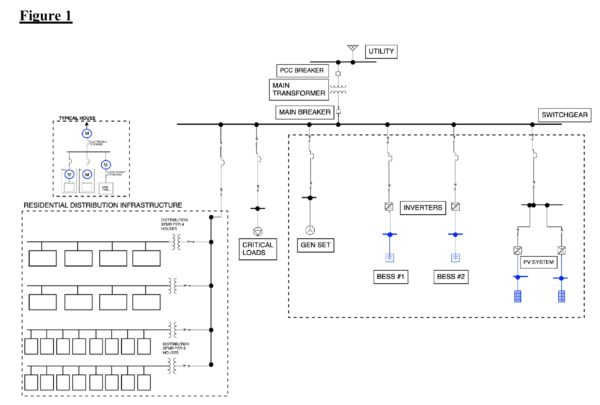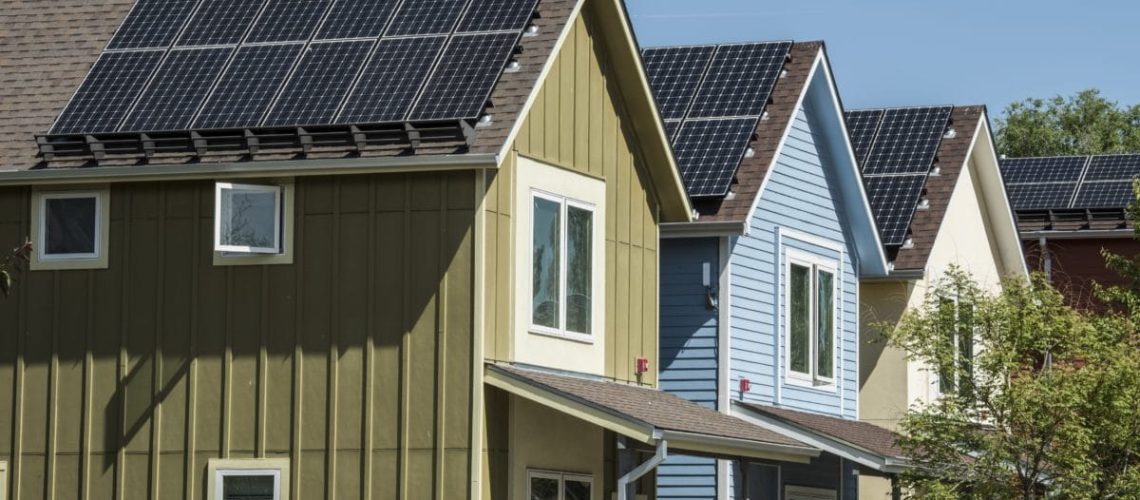Sunnova’s groundbreaking community microgrid proposal is fighting back against a motion to dismiss, from major utility companies who must feel their business plan is being attacked.
In September, Sunnova submitted a proposal to the California Public Utilities Commission (CPUC), requesting that its newly formed subsidiary,- Sunnova Community Microgrids California (SCMC), fully own and operate microgrids of 500 to 2,000 new homes in the California market.
All three of California’s large, for-profit utilities have come out against the proposal. The Public Advocate’s Office of California has suggested that the proposal be dismissed, as the group would like to complete its own microgrid standards development.
The proposal is partially based upon the definition of an `electric microutility’, as per Section 2780 of California’s Public Utility Code. The code defines the microutiliy as:
Any electrical corporation that is regulated by the commission and organized for the purpose of providing sole-source renewable and stand-by generation, distribution, and sale of electricity exclusively to a customer base of fewer than 2,000 customers.
The original filing, Application…for a Certificate…To Construct and Operate Public Utility Microgrids and to Establish Rates for Service, is based on a simulation of a proposed 500 customer community by SCMC. The average home size of 2,300 sq feet would require a 7 kW solar system and a battery with two 5-10 kWh batteries. The community would build an additional 300 kW solar plant and have a local standalone battery of approximately 2 MWh. The plan includes a backup generator with a capacity of 2 MW.
SCMC estimates the installation would cost $8 to $10 million. Analysis suggests that the microgrid would experience less than 30 minutes of annual down time, and could supply power in isolation for over 300 hours if the broader grid went down.
Homes within the microgrid would get approximately 82% of their electricity from the microgrid, and the remaining 18% from the grid.
The image above shows a simulation of a single family home within the microgrid. During the peak evening period, the home draws from its own battery before shifting to the microgrid battery (around 21:00). SCMS says that they expect to make use of the “Sunnova Adaptive Home technology to manage load through behavioral demand response,” to mitigate grid demand during critical peak periods.
Because each project’s generation capacity is less than 50 MW, distribution equipment is under 50 kV, and costs are under $50 million, these microgrids are small enough to avoid the detailed scrutiny of utility scale projects.
The state’s for-profit utilities have advanced a handful of justifications for the proposal to be dismissed.
Among San Diego Gas & Electric Company’s objections is an argument that Sunnova’s microgrid cannot be defined as an electricity microutility, since a microutility must get its electricity from a single source, and Sunnova’s proposal indicates that 18% of their proposed microgrid’s electricity would be supplied by the broader grid. The utility company also advanced an argument stating that since the electric microutility account limit is 2,000 customers, Sunnova’s plan to create multiple unique companies containing 2,000 customers inappropriately attempts to circumvent those rules.

Pacific Gas & Electric took issue with Sunnova’s proposal as well, pointing out that an electric microutility is required to submit exact designs of their facility before being approved as a microutility. However, SCMC had already stated that they would provide designs upon creation of the individual communities.
The state’s Public Advocacy Office filed a motion to dismiss the application. Their first objection notes that if SCMC’s proposal were approved in its requested form, it would be operating under “drastically limited regulations,” and would require a number of rules to be waived. They also expressed concerns about how rate-making would be established.
The Public Advocacy Office also requested that the state finish designing its own microgrid rules before proceeding. Those rules have been under development since 2020.
Sunnova has since filed a response to the dismissal, and to many of the arguments put forward by the utilities.
A group of five, including the Center for Biological Diversity, filed a proposal in support of SCMC, noting that SCMC’s proposal gives California a chance to commercialize the microgrids within the state. They cite the 2030 goal of deploying 2.5 million more homes in the state.



